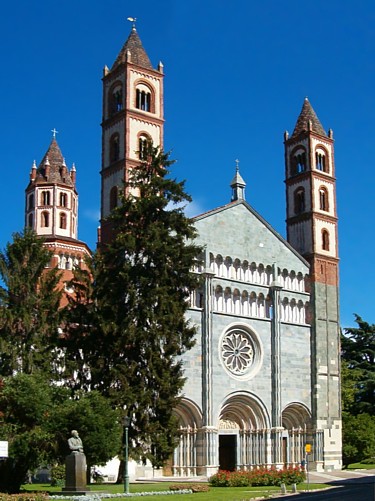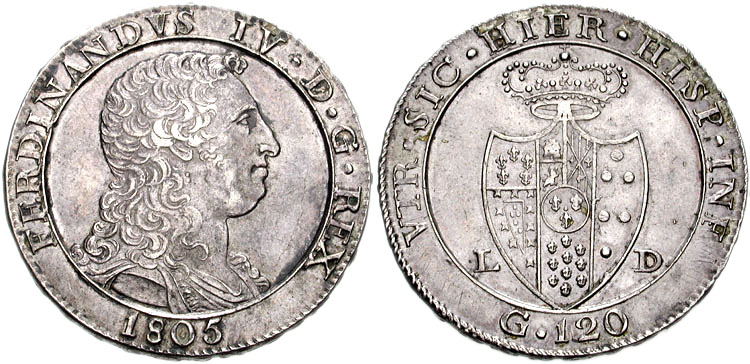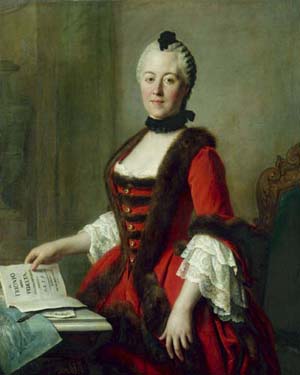|
Maria Carolina Of Savoy
Maria Carolina of Savoy (Maria Carolina Antonietta Adelaide; 17 January 1764 – 28 December 1782) was a Princess of Savoy from her birth. She was the youngest daughter of the future Victor Amadeus III of Sardinia and married in 1781 to the Electoral Prince of Saxony. She died of smallpox aged eighteen. Biography Born to the Duke and Duchess of Savoy at the Royal Palace of Turin, she was the couple's tenth child and sixth daughter. Her sisters included the future granddaughters-in-law of Louis XV of France, Princess Maria Giuseppina, who married the future Louis XVIII of France in 1771 and Princess Maria Teresa, wife of the future Charles X of France, married in 1773. Her sisters' brother in law was the unfortunate Louis XVI of France. Her brothers included the last three kings of Sardinia from the main line; the future Charles Emmanuel IV, Victor Emmanuel I and Charles Felix of Sardinia. Her father became king of Sardinia in 1773 at the death of her grandfather Charles ... [...More Info...] [...Related Items...] OR: [Wikipedia] [Google] [Baidu] |
Royal Palace Of Turin
The Royal Palace of Turin ( it, Palazzo Reale di Torino) is a historic palace of the House of Savoy in the city of Turin in Northern Italy. It was originally built in the 16th century and was later modernized by Christine Marie of France (1606–1663) in the 17th century, with designs by the Baroque architect Filippo Juvarra. The palace also includes the Palazzo Chiablese and the Chapel of the Holy Shroud, the latter of which was built to house the famous Shroud of Turin. In 1946, the building became the property of the state and was turned into a museum. In 1997, it was placed on the UNESCO World Heritage Site list along with 13 other residences of the House of Savoy. History Construction of the palace was ordered by the Regent Christina Maria in 1645. She wanted a new residence for the court after her son returned from the civil war. The chosen location was the previous Bishop's Palace, which had been built in the middle of the new capital of Savoy, Turin, during the reign of E ... [...More Info...] [...Related Items...] OR: [Wikipedia] [Google] [Baidu] |
Victor Emmanuel I Of Sardinia
Victor Emmanuel I (Vittorio Emanuele; 24 July 1759 – 10 January 1824) was the Duke of Savoy and King of Sardinia (1802–1821). Biography Victor Emmanuel was the second son of King Victor Amadeus III of Sardinia and Maria Antonia Ferdinanda of Spain, daughter of King Philip V of Spain and Elisabeth Farnese. Victor Emmanuel was known from birth as the Duke of Aosta. From 1792 to 1796, Aosta's father had taken an active part in the struggle of the old powers against the revolutionary forces in France but was defeated and forced to make peace, signing the Treaty of Paris. The old king died shortly thereafter, and in December 1798, his eldest son and successor, Charles Emmanuel IV, was faced with a French occupation and eventually annexation, of his mainland territories. Charles Emmanuel and his family were forced to withdraw to Sardinia, which was the only part of his domains not conquered by the French. Charles Emmanuel himself took little interest in the rule of Sardinia, li ... [...More Info...] [...Related Items...] OR: [Wikipedia] [Google] [Baidu] |
Amalie Of Zweibrücken-Birkenfeld
Amalie of Zweibrücken-Birkenfeld-Bischweiler (Maria Amalie Auguste; 10 May 1752 – 15 November 1828) was the last Electress and first Queen of Saxony and Duchess of Warsaw. Biography Amalie was born in Mannheim, the daughter of Count Palatine Frederick Michael of Palatinate-Zweibrücken-Birkenfeld-Bischweiler and his wife, Countess Palatine Maria Francisca of Palatinate-Sulzbach. She was the sister of Maximilian Joseph, later King of Bavaria. On 29 January 1769 she married the Saxon Elector Frederick Augustus III. In 1806, the Electress and her husband were proclaimed the first King and Queen of Saxony. The following year, Napoleon I made them Duke and Duchess of Warsaw, a newly created principality in Poland. Amalie bore four children, three of whom were stillborn. Only one daughter, Maria Augusta, attained adulthood, but remained unmarried. From 1804, at the death of her sister-in-law Carolina of Parma, she and her other sister-in-law, Maria Theresa of Austria ... [...More Info...] [...Related Items...] OR: [Wikipedia] [Google] [Baidu] |
Germany
Germany,, officially the Federal Republic of Germany, is a country in Central Europe. It is the second most populous country in Europe after Russia, and the most populous member state of the European Union. Germany is situated between the Baltic and North seas to the north, and the Alps to the south; it covers an area of , with a population of almost 84 million within its 16 constituent states. Germany borders Denmark to the north, Poland and the Czech Republic to the east, Austria and Switzerland to the south, and France, Luxembourg, Belgium, and the Netherlands to the west. The nation's capital and most populous city is Berlin and its financial centre is Frankfurt; the largest urban area is the Ruhr. Various Germanic tribes have inhabited the northern parts of modern Germany since classical antiquity. A region named Germania was documented before AD 100. In 962, the Kingdom of Germany formed the bulk of the Holy Roman Empire. During the 16th ce ... [...More Info...] [...Related Items...] OR: [Wikipedia] [Google] [Baidu] |
Augsburg
Augsburg (; bar , Augschburg , links=https://en.wikipedia.org/wiki/Swabian_German , label=Swabian German, , ) is a city in Swabia, Bavaria, Germany, around west of Bavarian capital Munich. It is a university town and regional seat of the ''Regierungsbezirk'' Schwaben with an impressive Altstadt (historical city centre). Augsburg is an urban district and home to the institutions of the Landkreis Augsburg. It is the third-largest city in Bavaria (after Munich and Nuremberg) with a population of 300,000 inhabitants, with 885,000 in its metropolitan area. After Neuss, Trier, Cologne and Xanten, Augsburg is one of Germany's oldest cities, founded in 15 BC by the Romans as Augsburg#Early history, Augusta Vindelicorum, named after the Roman emperor Augustus. It was a Free Imperial City from 1276 to 1803 and the home of the patrician (post-Roman Europe), patrician Fugger and Welser families that dominated European banking in the 16th century. According to Behringer, in the sixteen ... [...More Info...] [...Related Items...] OR: [Wikipedia] [Google] [Baidu] |
Vercelli
Vercelli (; pms, Vërsèj ), is a city and ''comune'' of 46,552 inhabitants (January 1, 2017) in the Province of Vercelli, Piedmont, northern Italy. One of the oldest urban sites in northern Italy, it was founded, according to most historians, around 600 BC. The city is situated on the Sesia River in the plain of the Po River between Milan and Turin. It is an important centre for the cultivation of rice and is surrounded by rice paddies, which are flooded in the summer. The climate is typical of the Po Valley with cold, foggy winters ( in January) and oppressive heat during the summer months ( in July). Rainfall is most prevalent during the spring and autumn; thunderstorms are common in the summer. The languages spoken in Vercelli are Italian and Piedmontese; the variety of Piedmontese native to the city is called ''Varsleis''. The world's first university funded by public money was established in Vercelli in 1228 (the seventh university founded in Italy), but was closed in 1 ... [...More Info...] [...Related Items...] OR: [Wikipedia] [Google] [Baidu] |
Palazzina Di Caccia Of Stupinigi
The Palazzina di caccia of Stupinigi (Italian: "The hunting residence of Stupinigi") is one of the Residences of the Royal House of Savoy in northern Italy, part of the UNESCO World Heritage Sites list. Built as a royal hunting lodge in the early 18th century, it is located in Stupinigi, a suburb of the town of Nichelino, southwest of Turin. History The original castle was owned by the Acaja line of the House of Savoy, Lords of Piedmont until 1418, and was sold to marquis Rolando Pallavicino in 1493. It was then acquired by Emmanuel Philibert in 1563, when the ducal capital was moved from Chambéry to Turin. The new palace was designed by the architect Filippo Juvarra to be used as a ''palazzina di caccia'' ("hunting lodge") for Victor Amadeus II, King of Sardinia. Works started in 1729. Within two years construction was far enough advanced for the first formal hunt to take place. Juvarra called upon a team of decorators, many of them from Venice, to carry out the decor of ... [...More Info...] [...Related Items...] OR: [Wikipedia] [Google] [Baidu] |
Princess Marie Louise Of Savoy
Princess is a regal rank and the feminine equivalent of prince (from Latin ''princeps'', meaning principal citizen). Most often, the term has been used for the consort of a prince, or for the daughter of a king or prince. Princess as a substantive title Some princesses are reigning monarchs of principalities. There have been fewer instances of reigning princesses than reigning princes, as most principalities excluded women from inheriting the throne. Examples of princesses regnant have included Constance of Antioch, princess regnant of Antioch in the 12th century. Since the President of France, an office for which women are eligible, is ''ex-officio'' a Co-Prince of Andorra, then Andorra could theoretically be jointly ruled by a princess. Princess as a courtesy title Descendants of monarchs For many centuries, the title "princess" was not regularly used for a monarch's daughter, who, in English, might simply be called "Lady". Old English had no female equivalent of "prince ... [...More Info...] [...Related Items...] OR: [Wikipedia] [Google] [Baidu] |
Ferdinand I Of The Two Sicilies
Ferdinand I (12 January 1751 – 4 January 1825) was the King of the Two Sicilies from 1816, after his restoration following victory in the Napoleonic Wars. Before that he had been, since 1759, Ferdinand IV of the Kingdom of Naples and Ferdinand III of the Kingdom of Sicily. He was also King of Gozo. He was deposed twice from the throne of Naples: once by the revolutionary Parthenopean Republic for six months in 1799 and again by Napoleon in 1805, before being restored in 1816. Ferdinand was the third son of King Charles VII of Naples and V of Sicily by his wife, Maria Amalia of Saxony. On 10 August 1759, Charles succeeded his elder brother, Ferdinand VI, becoming King Charles III of Spain, but treaty provisions made him ineligible to hold all three crowns. On 6 October, he abdicated his Neapolitan and Sicilian titles in favour of his third son, because his eldest son Philip had been excluded from succession due to imbecility and his second son Charles was heir-apparent to the S ... [...More Info...] [...Related Items...] OR: [Wikipedia] [Google] [Baidu] |
Charles IV Of Spain
, house = Bourbon-Anjou , father = Charles III of Spain , mother =Maria Amalia of Saxony , birth_date =11 November 1748 , birth_place =Palace of Portici, Portici, Naples , death_date = , death_place =Palazzo Barberini, Rome, Papal States , burial_place =El Escorial , religion =Roman Catholic , signature =Charles IV of Spain signature.svg Charles IV (Carlos Antonio Pascual Francisco Javier Juan Nepomuceno José Januario Serafín Diego) 11 November 1748 – 20 January 1819) was King of Spain and ruler of the Spanish Empire from 1788 to 1808. The Spain inherited by Charles IV gave few indications of instability, but during his reign, Spain entered a series of disadvantageous alliances and his regime constantly sought cash to deal with the exigencies of war. He detested his son and heir Ferdinand, who led the unsuccessful El Escorial Conspiracy and later forced Charles's abdication after the Tumult of Aranjuez in Marc ... [...More Info...] [...Related Items...] OR: [Wikipedia] [Google] [Baidu] |
Maria Antonia Of Bavaria
Maria Antonia, Princess of Bavaria, Electress of Saxony (18 July 1724 – 23 April 1780) was a German princess, composer, singer, harpsichordist and patron of the arts, known particularly for her operas: ''Il trionfo della fedeltà'' (“The triumph of fidelity”) and ''Talestri, regina delle amazoni'' (“Talestri, queen of the Amazons”). She was Electress of Saxony as the wife of Frederick Christian, Elector of Saxony. Following the latter's death in 1763, she became the Regent of Saxony for their son Frederick Augustus I of Saxony. Family and background Baptized ''Maria Antoina Walpurgis Symphorosa'', she was born at Nymphenburg Palace in Munich to Archduchess Maria Amalia of Austria and Elector Karl Albert of Bavaria. Throughout her life she received an outstanding education, particularly in the arts; including that of painting and writing poetry, as well as music. She was the fourth of seven children of the Elector and his wife. Marriage A marriage by proxy to ... [...More Info...] [...Related Items...] OR: [Wikipedia] [Google] [Baidu] |
Frederick Christian, Elector Of Saxony
Frederick Christian (german: Friedrich Christian; 5 September 1722 – 17 December 1763) was the Prince-Elector of Saxony for fewer than three months in 1763. He was a member of the House of Wettin. He was the third but eldest surviving son of Frederick Augustus II, Prince-Elector of Saxony and King of Poland, by his wife, Maria Josepha of Austria. Early life A weak child since his birth, he suffered paralysis in one foot and was dependent on wheelchairs early in life. In a well-known portrait, which shows his Wettin and Wittelsbach relatives around him, he appears in his wheelchair. Today, this painting is shown in the Schloss Nymphenburg. His mother tried repeatedly to induce him to take monastic vows and renounce his succession rights in favour of his younger brothers, but he refused.. The early deaths of his two older brothers, Frederick Augustus (1721), who was stillborn, and Joseph Augustus (1728), made him the heir to the throne. When his father died, on 5 October 176 ... [...More Info...] [...Related Items...] OR: [Wikipedia] [Google] [Baidu] |









